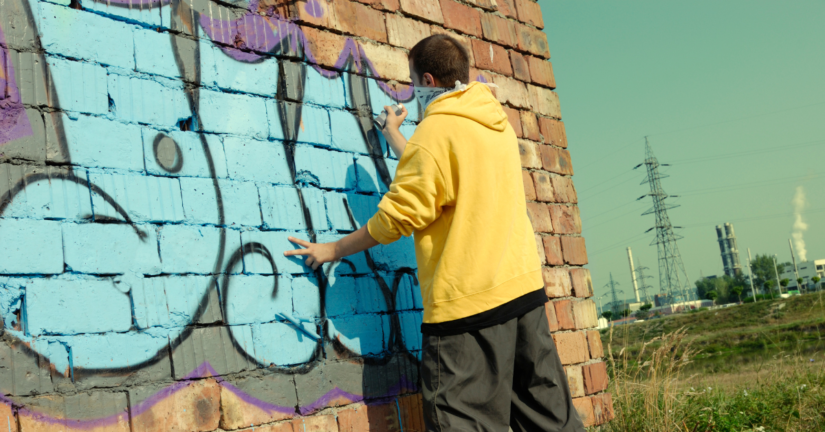
March 16, 2023
An innocent mistake can be construed as a malicious act of criminal mischief. For example, a silly prank among teens could lead to serious consequences. Also, ill-intentioned people might cause severe damage to your property, which requires accountability.
Whether you’re on the initiating or receiving end of such incidents, it’s best to be informed on criminal mischief in Texas.
A Simple Explanation of Criminal Mischief
There’s a wide range of incidents that can be categorized as criminal mischief. Common examples are spraying paint on someone’s wall, keying a car, letting a horse out of a gated area, or breaking a neighbor’s window after an argument.
To summarize all these unpleasant actions, we can simply say that criminal mischief is the intentional destruction of another person’s property, without their explicit consent.
What Actions Count as Criminal Mischief in Texas?
Texas penal code states that the following constitute criminal mischief.
“A person commits an offense if, without the effective consent of the owner:
(1) he intentionally or knowingly damages or destroys the tangible property of the owner.
(2) he intentionally or knowingly tampers with the tangible property of the owner and causes pecuniary loss or substantial inconvenience to the owner or a third person; or
(3) he intentionally or knowingly makes markings, including inscriptions, slogans, drawings, or paintings, on the tangible property of the owner.”
People should be extra cautious with their actions, as doing something for laughs could easily escalate into a sticky situation punishable by law.
How Is Criminal Mischief Penalized in Texas?
According to the penal code in Texas, criminal mischief consequences range from a small fine to 99 years in prison and a hefty fine. This all depends on the severity of the damages and the maliciousness of the intent.
Here’s a summary of damage values and the corresponding criminal mischief penalization.
| Damage Valuation | Criminal Description | Penalization |
| Under $100 | Class C misdemeanors | Maximum fines of $500 |
| Between $100 and $750 | Class B misdemeanors | Up to 180 days in jail and up to $2,000 in fines |
| Between $750 and $2,500 | Class A misdemeanors | Up to one year in jail and up to $4,000 in fines |
| Between $2,500 and $30,000 | State jail felony | Up to two years in jail and by fines of up to $10,000 |
| Damage does not exceed $2,500 The perpetrator used a firearm or explosive device to cause damage to someone else’s habitation | Felony | Sizable fines and up to two years in jail |
| Damage does not exceed $2,500 The damaged property was a fence for horses, cattle, goats, sheep, swine, or livestock or poultry | Felony | Sizable fines and up to two years in jail |
| Damage does not exceed $2,500 The damaged property was a fence for game animals | Felony | Sizable fines and up to two years in jail |
| Between $30,000 and $150,000 | Third Degree Felony | Two to ten years in prison and/or a fine not to exceed $10,000 |
| Between $150,000 and $300,000 | Second Degree Felony | Two to twenty years in prison and/or a fine not to exceed $10,000 |
| Damage to property exceeding $300,000 | First Degree Felony | Five to 99 years in prison and/or a fine not to exceed $10,000 |
What if There Was No Intention of Damaging Property?
The intent is an integral part of criminal mischief characterization. The whole case hinges on two necessary conditions:
- The perpetrator(s) should be fully aware of what they’re doing.
- The perpetrator(s) should have a basic understanding of the consequences.
Without a motive or a provable malicious intent, it’s hard to charge someone with criminal mischief.
Counter Arguments Against Criminal Mischief Charges
Accurate characterization is essential for establishing a criminal mischief case in Texas. That’s why a person who has been subject to such transgression on his property needs to gather leak-tight evidence.
On the other hand, lawyers defending an alleged perpetrator have the following points to argue the validity of the case.
It Was an Honest Mistake
Accidents are quite different from criminal mischief, and the main factor that sets them apart is intent.
Lawyers usually examine the evidence and try to prove that the incident wasn’t intentional. A powerful method is by proving that the perpetrator doesn’t know the victim at all.
This wouldn’t hold though if the incident happened during a violent riot, a raucous party, insane challenges, pranks, or any other form of disorderly behavior.
The Owner Knows and Consents
What if you were cutting a tree on your side of the fence, but a large branch fell on your neighbor’s side and damaged his brand-new car?
The damaged property here involves a fence, and the costs would clearly cross the $2,500 limit. This could be considered a felony, and the penalties would be quite serious.
Lawyers would mostly go for acknowledging the fact that the neighbor knew all along about the tree-cutting plan, and didn’t really disagree. With that implied consent, ill intent can hardly be proved beyond a reasonable doubt.
There Is No Evidence
Tangible evidence comes from surveillance camera footage, clear photographs, and consistent testimonies from several witnesses. Anything less than that is considered an allegation that’s hard to prove.
Additionally, the case should have no ambiguity. If there were too many people involved in the incident, or the damages could be from previous incidents, then it’s hard to establish intent and damage value beyond a doubt.

The Damages Are Trivial
Crossing the $2,500 line means changing the legal claims from a misdemeanor to a felony. Jail time and fines increase substantially as well along with that. Pricey damages generally demand more accountability than trivial ones.
Lawyers often argue that the estimated damage costs are much higher than the actual figures. They’d bring in a third party to reassess the damages, and give a lower figure. If the new amount falls beneath $2,500, then that’s a win.
In Texas, felony cases often get a grand jury to see whether the matter is worth promoting to higher litigation or dismissing. The state needs to prove beyond any doubt that the damages are substantial and worth penalizing the perpetrators as felons.
The counter-argument is often that the damages are trivial, and not worth the jury’s consideration.
Sometimes, the case is reduced to a misdemeanor. Other times, the jury gives a No Bill outcome, which means that the whole case is crossed out, or expunged, from the alleged perpetrator’s criminal record.
To Sum Up
You should always avoid putting yourself on the wrong side of the law. To accomplish that, you need a thorough understanding of what’s right and what’s problematic.
At the same time, you should get your rightful reparations if someone intentionally damages your property. Accountability is only possible if you know how the penal code works.
Understanding what’s considered criminal mischief in Texas is essential to make sure that you don’t cross a line. And if someone does that to you, you’d be well equipped. If you’re facing criminal mischief charges, you need a criminal defense lawyer who can protect your rights and fight for your freedom. The Napier Law Firm specializes in criminal defense and has a team who are committed to providing aggressive representation for their clients. Don’t wait until it’s too late – call 713-470-4097 today to schedule a free consultation with a criminal defense lawyer from The Napier Law Firm.